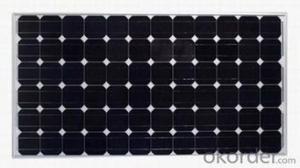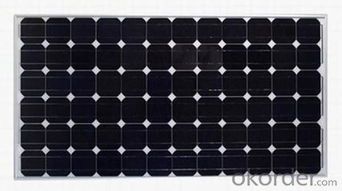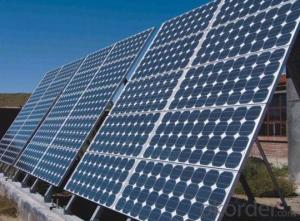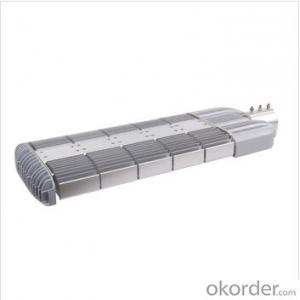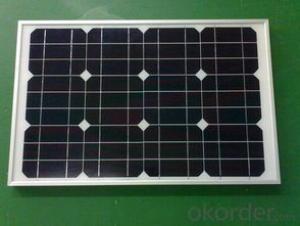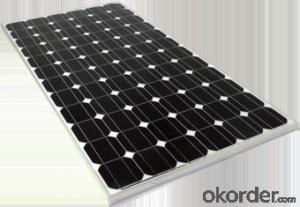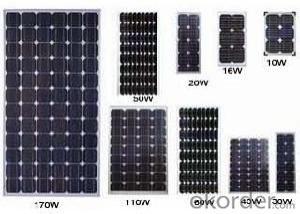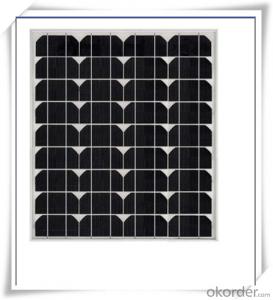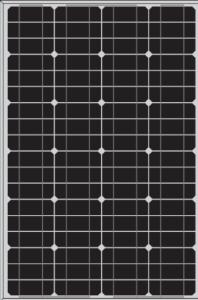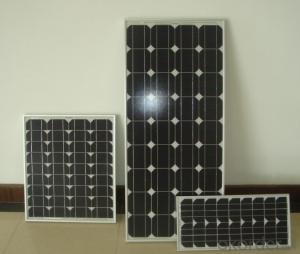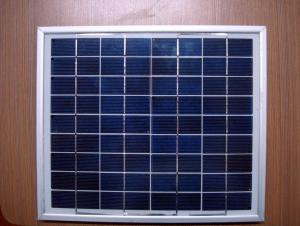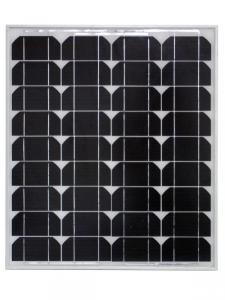Portable Solar Panels for Homes:Factory Price 1.5W to 180W Monocrystalline Solar Panel CNBM
- Loading Port:
- Qingdao
- Payment Terms:
- TT OR LC
- Min Order Qty:
- 10 set
- Supply Capability:
- 300000 set/month
OKorder Service Pledge
OKorder Financial Service
You Might Also Like
1.5W to 180W Monocrystalline Solar Panel
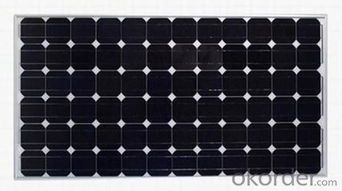
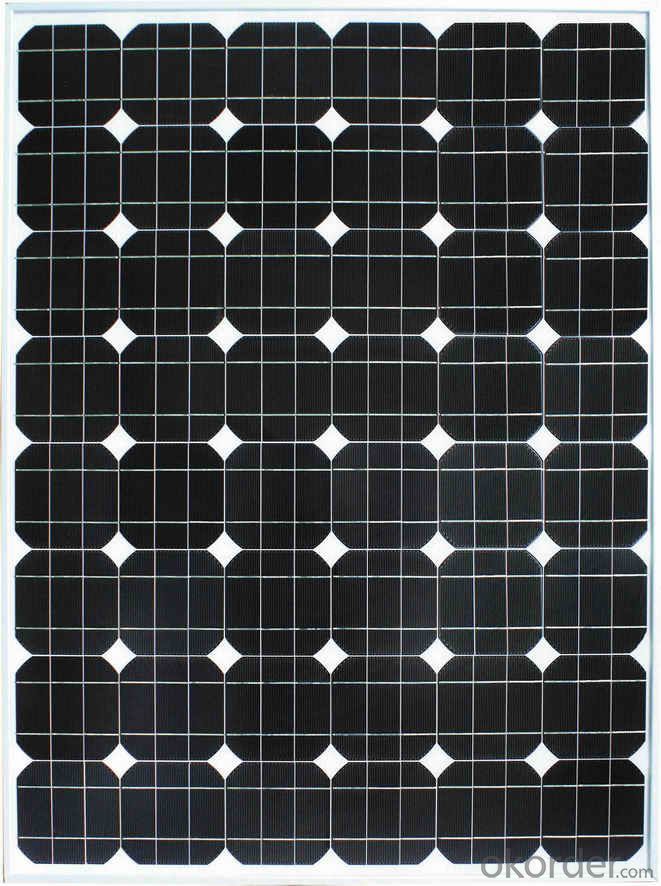
Quick Details
Place of Origin: | China (Mainland) | Brand Name: | CNBM | Model Number: | XRP-156M-250W |
Material: | Monocrystalline Silicon | Size: | 1620x992x40mm | Number of Cells: | 60 |
Max. Power: | 250w | Optimum Operating Voltage (Vmp): | 28.8V | Optimum Operating Current (Imp): | 8.68A |
Open Circuit Voltage (Voc): | 36V | Short Circuit Current (Isc): | 8.87A | Maximum Power at STC (Pmax): | 250W |
Operating Module Temperature: | -40 °C to +85 °C | Maximum System Voltage: | 1000 V DC (IEC) / 600V DC (UL) | Maximum Series Fuse Rating: | 15A |
Packaging & Delivery
Delivery Detail: | two weeks after order confirmation |
Features:
1) High Module conversion efficiency, through superior manufacturing technology
2) 0 to +5W positive tolerance for mainstream products
3) Certified to withstand high wind loads and snow loads
4) Anodized aluminum is for improving corrosion resistance
5) Anti-reflective, Highly transparent, low iron tempered glass
6) Excellent performance under low light environment
Benefit:
25-year performance warrant
10-year Product warranty
Electrical Characteristics:
Item No. | XRM-250W |
Optimum Operating Voltage (Vmp) | 28.8V |
Optimum Operating Current (Imp) | 8.68A |
Open Circuit Voltage (Voc) | 36V |
Short Circuit Current (Isc) | 8.87A |
Maximum Power at STC (Pmax) | 250W |
Cell Efficiency | 17.70% |
Operating Module Temperature | -40 °C to +85 °C |
Maximum System Voltage | 1000 V DC (IEC) / 600V DC (UL) |
Maximum Series Fuse Rating | 15A |
Power Tolerance | 0/+5 % |
STC: lrradiance 1000 W/m2, module temperature 25 °C, AM=1.5;
Best in Class AAA solar simulator (IEC 60904-9) used, power measurement uncertainty is within +/- 3%
Mechanical Characteristics:
No. of Cells | 60(6X10) |
Dimensions | 1640x992x40MM |
Weight | 20.0KGS |
Front | Glass 4.0 mm tempered glass |
Frame | Anodized aluminium alloy |
Temperature Characteristics:
Nominal Operating Cell Temperature (NOCT) | 45±2°C |
Temperature Coefficient of Pmax | -0.44 %/°C |
Temperature Coefficient of Voc | -0.33 %/°C |
Temperature Coefficient of Isc | 0.055 %/°C |
Refer to the Wmp range
Our factory can produce solar panel and solar module from 1.5W-290w (1.5w, 2.5w, 5w, 10w, 20w, 40w, 50w, 60w, 80w, 85w, 125w, 135w, 150w, 165w, 180w), according to customers requirement.
(A). Wmp range: 0.01W-6W, to be sealed with epoxy resin on PCB (printed circuit board), or to be sealed in plastic directly.
(B). Wmp range: 0.01W-15W, to be encapsulated with PET, on PCB (printed circuit board)
(C). Wmp range: 1W-60W, to be encapsulated with PET, on stainless steel, with holes for assembling purpose.
(D). Wmp range: 1W-290W, to be encapsulated with tempered glass, EVA, TPT, together with aluminium frame, junction box and (if necessary)diode and cable.
Refer to the material:
Monocrystalline solar cell or polycrystalline solar cell
Efficiency range 14%-17%, cell size 5/6.
- Q: Hey guys :)Well I'm in the middle of doing my PSHCE coursework on sustainable energy, focusing on solar panels. I just wanted to ask you what your opinions are of them? Are they really worth it? Are they sustainable? Will they reduce our energy bills? Those sort of questions :)If you are interested in installing solar panels, please mention that, as it would be great! There's lots of information about them on this site ----
- I have a boat in a sunny place and four 80 watt panels. These will run my fridge Tv and a few LED's. I still have to run my engine for hot water and washing machine. My Batteries only last a few years and are a real pain. I go on the mains when I can to get the batteries topped up. The panels are ok if there is nothing else, they are not the answer to the future of energy supply. There is also the moral aspect of the feed in tariff. For the rich to load their electricity bill onto the less well off is not acceptable and those panels on the roof tell all your neighbors that you are doing it. That will show a greedy selfish attitude. If they are any good why don't the power companies buy them and save buying coal?
- Q: I want to install a solar panel system and our power grid can't work in reverse(so it get its electricity from us). My question is how do you prevent electricity from our panel to go to the grid without disconnecting the grid? How can we also use the grid and the panel at the same time when the panel are not creating enough power?PS dont say ask an electrician
- If you are grid-tied, then a standard solar electric system will always feed back into the grid if you are not utilizing more power in your home than is being generated by the solar panels and inverter system. It is possible that a grid isolation device designed to prevent direct back feeding is available, but haven't heard of one in common use. New laws in most areas of the US are now mandating that utilities allow grid-tied alternative energy systems. Double-check you local laws. Sometimes you can't take the utilities word for truth--most will automatically say 'no' and will only relent when you show up with the law in hand. Unfortunately, some utilities have figured out another way to shut down alternative energy pioneers--they demand multimillion dollar insurance policies covering damage that their equipment could sustain from your little PV system. Technically, they are still in compliance with the law, they just make it impossible for a homeowner to meet their requirements. If you are getting the runaround, go to your state representative for help. It's amazing how contrite those utility people can be when a state senator (or even US Senator) has just sent a letter asking them why they are stonewalling a law-abiding and well-meaning citizen. Good luck, and don't give up!
- Q: I'm looking at solar panels and I have NO IDEA what this stuff means.They come in catagories of Watts. What does that refer to? If a solar pannel is in the 200-watt catagory, what does that really mean? Will it produce 200 watts an hour, a day, a week, a month, a year?? How many watts of energy does the average house use up in one month? I really wish they would just tell me on the website!! :(0 points!!!!!!!! :D
- Watts is a measurement of power which is a combination of Voltage x Amps Example: a 200 Watt panel can produce 6.6 amps at 2 Volts. (200 = 2 x 6.6) If you bought a 24 volt system the same 200 Watts would give you half the amount of amps since the power (watts) is the same. When determining your needs for a solar system there are many factors that have to be taken into account. The amount of power you use will depend on what appliances you have in the house, how much you use them, and how careful you are with vampire loads (A TV or stereo will use some power even when turned off unless you unplug them). The amount of panels you need will also depend on your battery system, amount of sunlight that you have in a day and how many days of reserve power you think you will need based on the weather in your area. If you wanted to completely run your house on solar energy you are looking at an investment of $5,000 - $20,000 or even more. There sometimes are tax incentive depending on where you live that will reduce your overall cost. Some examples of power usage: Toaster : 800-500W Microwave : 600-500W Dishwasher : 200-500W Washing Machine : 500W Vacuum Cleaner : 200-700W Iron : 000W Clothes dryer : 4000W Ceiling Fan : 0-50W Table Fan : 0-25W Electric Blanket : 200W Hair Blow dryer : 000W Electric Shaver : 5W Laptop Computer : 20-50W Desktop Computer : 80-50W TV (9 colour) : 70W Clock radio : W Fridge / Freezer : 500W 25 colour TV : 50W Electric Kettle : 2000W
- Q: I have the wattage of solar panel but i dont know about the voltage amp; current rating of it. Plz explain me about the voltage rating of solar panel.
- The voltage rating and current rating are part of the specifications for the panel. You will have them listed on the spec sheet. The voltage number is usually the open circuit voltage of the panel, the voltage with no load. The current number is the short circuit current of the panel. In use, you need special electronics, called a Maximum Power Tracker (MPT) controller, which adjust the load to get the most power from the panel, and adjust the voltage output via a DC-DC converter to the optimal conditions to charge the attached battery. how to take batteries as per solar wattage ? sorry, don't understand this.
- Q: Can solar panels be installed on a gas station or fueling facility?
- Yes, solar panels can be installed on a gas station or fueling facility. In fact, many gas stations and fueling facilities are increasingly adopting solar power as a means to reduce their carbon footprint and save on energy costs. These solar panels can be installed on rooftops, canopies, or even as carports, making them a versatile and effective solution for powering these energy-intensive facilities.
- Q: My family and I are looking into solar panels for our home. But I'm unsure how it would be priced. This month our home used ,623 kwh. The solar panel company said we should expect $6-$9 per watt used. What would that put as at?
- I don't know how they calculate out the savings, but ask your local supplier. The expensive part of heating hot water is the initial starting of the warming of the cold water, but this is where solar panels come to play a very good role in preheating home hot water cylinders. Sometimes the water coming from the solar panels is hotter than what the hot-water cylinder thermostat is set for this is one way you save money Another equally expense of heating hot-water is when the element thermostat keeps the temperature up to the desired setting of the thermostat. Where as having a solar panel or two the hot water cylinder is only a storage container to store the hot water in! A great invention in my book! The initial costs are buying these units having them installed, but over time you will start saving money on your heating hot water costs, where you will be able to waste a bit of hot water and not worry about the costs going to waste or down the drain... I suppose you know all of this, but I'm sorry, I can't convert your conversion question, best ask the supplier to put everything in layman's terms so you can understand it better more clearly! Cheers!!
- Q: how long till a 50 watt solar panel pays itself off in buffalo, ny if its $500. i have national grid and heres the link to the rates. i am residential.
- lots of info about solar panels, perhaps you'll find answer to your question renewableenergyarticles.blogspot....
- Q: Pros and Cons if I get solar panels?
- At the present time, even with the government paying some, they are not cost effective. If you live in middle of nowhere and you want to be prepared in case all Hell breaks loose, and you can install your own, then I might consider them as a backup plan only if I did not have a running stream with 0 feet of drop. You can make a water generator really cheap if you have that creek. Call a solar panel company and get a quote. Do the math and see how long it takes for pay back. They are also allergic to hailstorms. My son did and it was something like 40 years to break even.
- Q: For part of a school project how would I charge a car battery with a solar panel? The panel is 48V and 6A. This needs to be low budget so I can't buy an expensive controller, Is that the only way or are there other ways of doing it?
- 48 volts is rather uncomfortable. I would be inclined to modify the panel by cutting traces to give me a number of 5 volt sets. Most PV cells output about 700 mV, but check to see what yours does. Measure one cell, or count the number of cells and divide into the panel voltage. If you work with the 48 volt output, you are throwing 70% of the output away. The classic method of charging a lead/acid battery is to use the 0 hour rate...a 200 AH battery is charged at 20 amps. However if the charge is to be near continuous during daylight, I think I would go a little lower...say 5 amps in order to be kind to the battery. I note that your panel has a 6 amp output, so when you modify it, it should be able to deliver about 8 amps. A useful trick is to use car headlamp bulbs in series. The filament has a high positive thermal coefficient of resistance, and tends to act as a current regulator. In this case, I would use two dual filament bulbs with their filaments in parallel, arranged in series.
- Q: Can solar panels be installed on wineries or vineyards?
- Yes, solar panels can be installed on wineries or vineyards. In fact, they are increasingly being utilized in the wine industry as a sustainable energy solution. Solar panels can be mounted on rooftops, canopies, or even on the ground in open spaces, providing clean and renewable energy to power the winery operations.
Send your message to us
Portable Solar Panels for Homes:Factory Price 1.5W to 180W Monocrystalline Solar Panel CNBM
- Loading Port:
- Qingdao
- Payment Terms:
- TT OR LC
- Min Order Qty:
- 10 set
- Supply Capability:
- 300000 set/month
OKorder Service Pledge
OKorder Financial Service
Similar products
Hot products
Hot Searches
Related keywords
